Preceded by Position created | Preceded by Position created | |
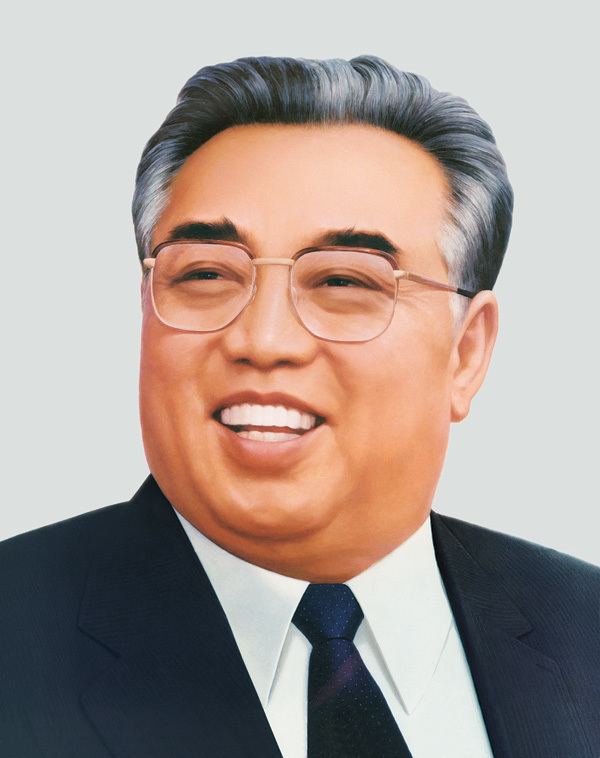 | ||
Premier Kim IlPak Song-cholLi Jong-okKang Song-sanLi Gun-moYon Hyong-muk Grandchildren Kim Jong-un, Kim Jong-nam, Kim Jong-chul | ||
Preceded by Himself (as Chairman) Similar Kang Pan sok, Kim Hyong jik, Kim Jong suk Died 8 July 1994 (aged 82) Hyangsan Residence, Hyangsan County, North P'yŏngan province, North Korea Born 15 April 1912 (age 82), Mangyongdae, P'yŏng'yang-bu, P'yŏng'annam-do, Japanese Korea | ||
Kim Il-sung ( ; Korean: 김일성, [kimils͈ʌŋ]; born Kim Sŏng-ju (김성주); 15 April 1912 – 8 July 1994) was the leader of North Korea from its establishment in 1948 until his death in 1994. He held the posts of Premier from 1948 to 1972 and President from 1972 to 1994. He was also the leader of the Workers' Party of Korea (WPK) from 1949 to 1994 (titled as chairman from 1949 to 1966 and as general secretary after 1966). Coming to power after the overthrow of Japanese rule in 1945, he authorized the invasion of South Korea in 1950, triggering a defense of South Korea by the United Nations led by the United States. Following military stalemate in the Korean War, a cease-fire was signed on 27 July 1953. He was one of the longest-serving non-royal heads of state/government in the 20th century, in office for more than 45 years.
Contents
- Facts
- Celebrating the great leader eternal president kim il sung
- Controversy about origins
- Family background
- Communist and guerrilla activities
- Return to Korea
- Rise of cult of personality
- Korean War
- Consolidating power
- Later rule
- Personal life
- Death
- Legacy
- Works
- Kim il sung the supreme leader tooky history
- References
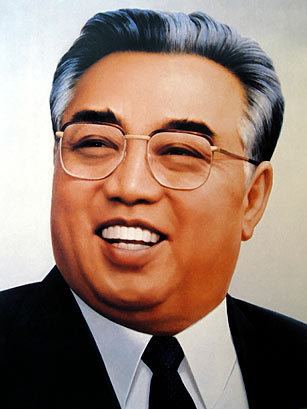
Under his leadership, North Korea became a workers' state with a publicly owned planned economy. It had close political and economic relations with the Soviet Union. By the 1960s, North Korea enjoyed a relatively high standard of living, outperforming the South, which was riddled with political instability and economic crises. The situation reversed in the 1980s, as a stable South Korea became an economic powerhouse fueled by Japanese and American investment, military aid and internal economic development while North Korea stagnated. Differences between North Korea and the Soviet Union made the countries less aligned in world politics, central among these differences being Kim Il-sung's philosophy of Juche, which focused on Korean patriotism and self-reliance. Despite this, the country received funds, subsidies, and aid from the USSR (and the Eastern Bloc) until the dissolution of the USSR in 1991. The resulting loss of economic aid adversely affected the North's economy. During this period, North Korea also remained critical of United States imperialism, and seized the American ship USS Pueblo (AGER-2) in 1968. North Korea under his rule was characterized as totalitarian and human right abuses were widespread including prison camps and mass executions.
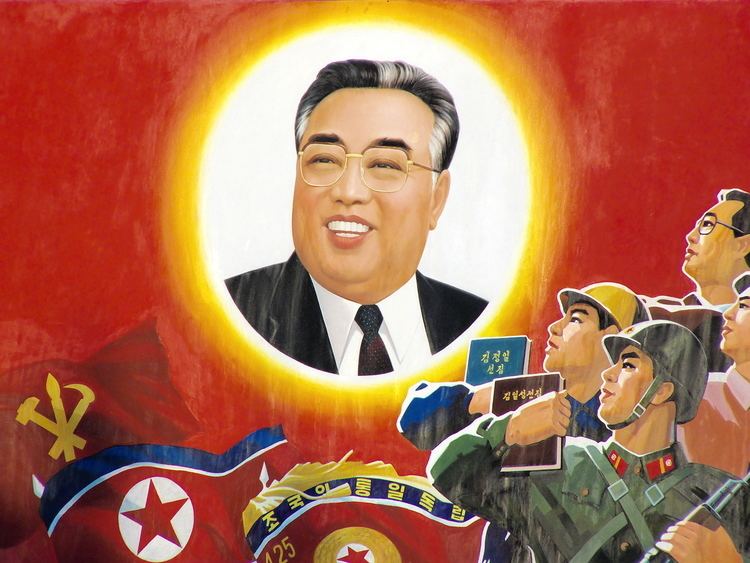
Kim's mass popularity came to dominate domestic politics. At the 6th WPK Congress in 1980, his son Kim Jong-il, was elected as Politburo Standing Committee member and his heir to supreme leadership. Kim Il-sung's birthday is a public holiday in North Korea and is called the "Day of the Sun".
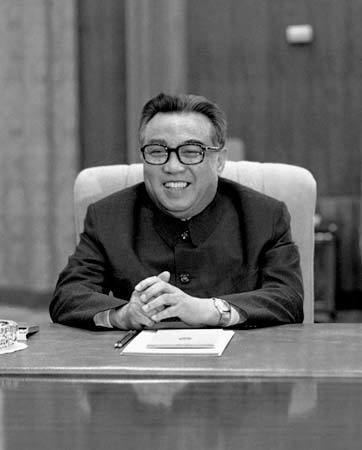
Facts
Celebrating the great leader eternal president kim il sung
Controversy about origins
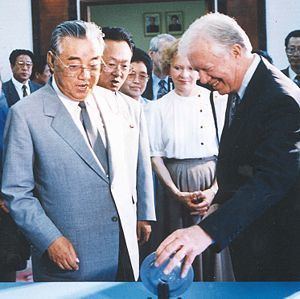
Controversy surrounds Kim's life before the founding of North Korea, with some sources labeling him an impostor. Several sources indicate that the name "Kim Il-sung" had previously been used by a prominent early leader of the Korean resistance, Kim Kyung-cheon. The Soviet officer Grigory Mekler, who worked with Kim during the Soviet occupation, said that Kim assumed this name from a former commander who had died. However, historian Andrei Lankov has argued that this is unlikely to be true. Several witnesses knew Kim before and after his time in the Soviet Union, including his superior, Zhou Baozhong, who dismissed the claim of a "second" Kim in his diaries. Historian Bruce Cumings pointed out that Japanese officers from the Kwantung Army have attested to his fame as a resistance figure. Historians generally accept that, while Kim's exploits were exaggerated by the personality cult that was built around him, he was a significant guerrilla leader.
Family background

Many North Koreans believe Kim-il-Sung is an "almighty god" who "created the world" in seven days as a divine spirit millions of years ago, and came to Earth as a human in 1912 as a messianic figure.
He was born to Kim Hyŏng-jik and Kang Pan-sŏk, who gave him the name Kim Sŏng-ju; Kim also had two younger brothers, Ch’ŏl-chu (or Kim Chul Joo) and Kim Yŏng-ju.
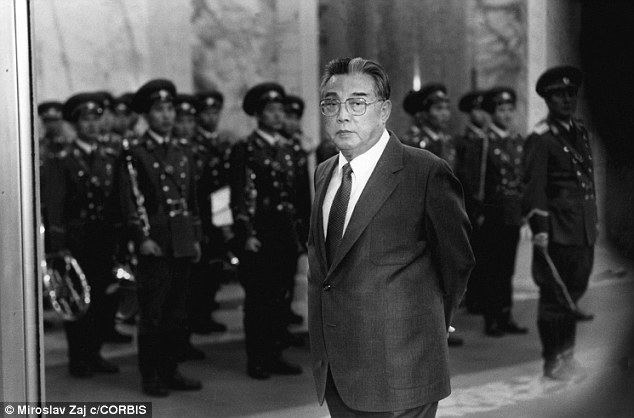
Kim's family is said to have originated from Jeonju, North Jeolla Province. His great-grandfather, Kim Ung-u, settled in Mangyong-dae in 1860. Kim is reported to have been born in the small village of Mangyungbong (then called Namni) near Pyongyang on 15 April 1912.
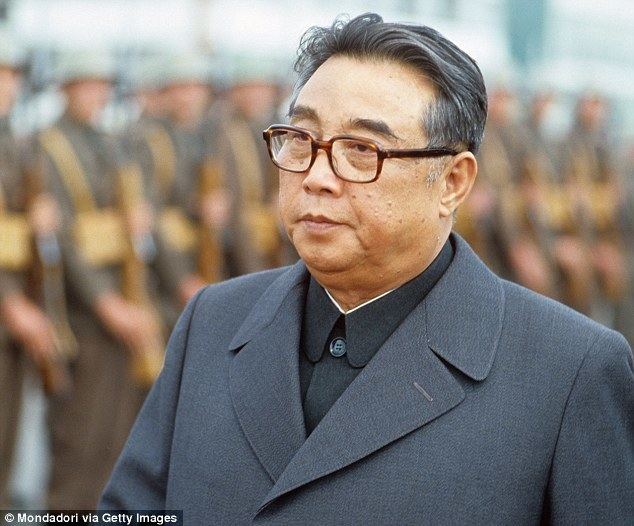
According to Kim, his family was not very poor, but was always a step away from poverty. Kim said that he was raised in a Presbyterian family, that his maternal grandfather was a Protestant minister, that his father had gone to a missionary school and was an elder in the Presbyterian Church, and that his parents were very active in the religious community. According to the official version, Kim’s family participated in anti-Japanese activities and in 1920 they fled to Manchuria. Like most Korean families, they resented the Japanese occupation of the Korean peninsula, which began on 29 August 1910. Another view seems to be that his family settled in Manchuria, as many Koreans had at the time to escape famine. Nonetheless, Kim's parents, especially Kim's mother Kang Ban Suk, played a role in the anti-Japanese struggle that was sweeping the peninsula. Their exact involvement—whether their cause was missionary, nationalist, or both—is unclear nevertheless. Still, Japanese repression of opposition was brutal, resulting in the arrest and detention of more than 52,000 Korean citizens in 1912 alone. This repression forced many Korean families to flee Korea and settle in Manchuria.
Communist and guerrilla activities
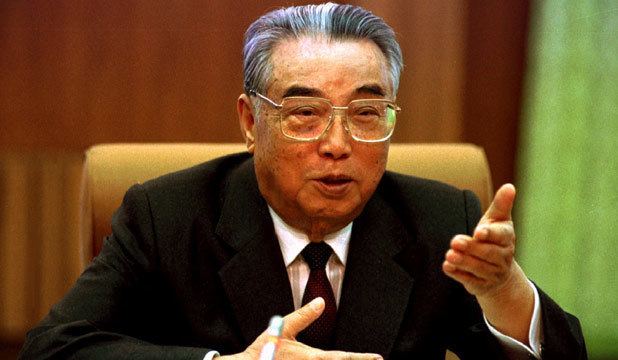
In October 1926 Kim founded the Down-With-Imperialism Union. Kim attended Whasung Military Academy in 1926, but finding the academy's training methods outdated, he quit in 1927. From that time, he attended Yuwen Middle School in Jilin up to 1930, where he rejected the feudal traditions of older-generation Koreans and became interested in communist ideologies; his formal education ended when the police arrested and jailed him for his subversive activities. At seventeen Kim had become the youngest member of an underground Marxist organization with fewer than twenty members, led by Hŏ So, who belonged to the South Manchurian Communist Youth Association. The police discovered the group three weeks after it formed in 1929, and jailed Kim for several months.
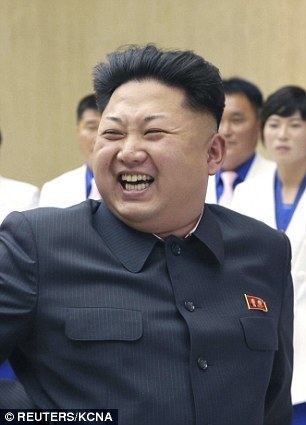
In 1931 Kim joined the Communist Party of China—the Communist Party of Korea had been founded in 1925, but had been thrown out of the Comintern in the early 1930s for being too nationalist. He joined various anti-Japanese guerrilla groups in northern China. Feelings against the Japanese ran high in Manchuria, but as of May 1930 the Japanese had not yet occupied Manchuria. On 30 May 1930 a spontaneous violent uprising in eastern Manchuria arose in which peasants attacked some local villages in the name of resisting "Japanese aggression." The authorities easily suppressed this unplanned, reckless and unfocused uprising. Because of the attack, the Japanese began to plan an occupation of Manchuria. In a speech before a meeting of Young Communist League delegates on 20 May 1931 in Yenchi County in Manchuria, Kim warned the delegates against such unplanned uprisings as the 30 May 1930 uprising in eastern Manchuria.
Four months later, on 18 September 1931, the "Mukden Incident" occurred, in which a relatively weak dynamite explosive charge went off near a Japanese railroad in the town of Mukden in Manchuria. Although no damage occurred, the Japanese used the incident as an excuse to send armed forces into Manchuria and to appoint a new puppet government. In 1935, Kim became a member of the Northeast Anti-Japanese United Army, a guerrilla group led by the Communist Party of China. Kim was appointed the same year to serve as political commissar for the 3rd detachment of the second division, consisting of around 160 soldiers. Here Kim met the man who would become his mentor as a Communist, Wei Zhengmin, Kim's immediate superior officer, who served at the time as chairman of the Political Committee of the Northeast Anti-Japanese United army. Wei reported directly to Kang Sheng, a high-ranking party member close to Mao Zedong in Yan'an, until Wei's death on 8 March 1941.
In 1935 Kim took the name Kim Il-sung, meaning "Kim become the sun". Kim was appointed commander of the 6th division in 1937, at the age of 24, controlling a few hundred men in a group that came to be known as "Kim Il-sung's division". While commanding this division he executed a raid on Poch’onbo, on 4 June 1937. Although Kim's division only captured the small Japanese-held town just within the Korean border for a few hours, it was nonetheless considered a military success at this time, when the guerrilla units had experienced difficulty in capturing any enemy territory. This accomplishment would grant Kim some measure of fame among Chinese guerrillas, and North Korean biographies would later exploit it as a great victory for Korea. For their part the Japanese regarded Kim as one of the most effective and popular Korean guerrilla leaders. He appeared on Japanese wanted lists as the "Tiger". The Japanese "Maeda Unit" was sent to hunt him in February 1940, but he was able to destroy it. Kim was appointed commander of the 2nd operational region for the 1st Army, but by the end of 1940 he was the only 1st Army leader still alive. Pursued by Japanese troops, Kim and what remained of his army escaped by crossing the Amur River into the Soviet Union. Kim was sent to a camp at Vyatskoye near Khabarovsk, where the Soviets retrained the Korean Communist guerrillas. Kim became a Major in the Soviet Red Army and served in it until the end of World War II in 1945.
Return to Korea
The Soviet Union declared war on Japan on 8 August 1945, and the Red Army entered Pyongyang on 24 August 1945. Stalin had instructed Lavrentiy Beria to recommend a Communist leader for the Soviet-occupied territories and Beria met Kim several times before recommending him to Stalin.
Kim arrived in the Korean port of Wonsan on 19 September 1945 after 26 years in exile. According to Leonid Vassin, an officer with the Soviet MVD, Kim was essentially "created from zero". For one, his Korean was marginal at best; he had only had eight years of formal education, all of it in Chinese. He needed considerable coaching to read a speech (which the MVD prepared for him) at a Communist Party congress three days after he arrived.
In December 1945, the Soviets installed Kim as chairman of the North Korean branch of the Korean Communist Party. Originally, the Soviets preferred Cho Man-sik to lead a popular front government, but Cho refused to support a UN-backed trusteeship and clashed with Kim. General Terentii Shtykov who led the Soviet occupation of northern Korea, supported Kim over Pak Hon-yong to lead the Provisional People's Committee for North Korea on 8 February 1946. As chairman of the committee, Kim was "the top Korean administrative leader in the North," though he was still de facto subordinate to General Shtykov until the Chinese intervention in the Korean War.
To solidify his control, Kim established the Korean People's Army (KPA), aligned with the Communist Party, and he recruited a cadre of guerrillas and former soldiers who had gained combat experience in battles against the Japanese and later against Nationalist Chinese troops. Using Soviet advisers and equipment, Kim constructed a large army skilled in infiltration tactics and guerrilla warfare. Prior to Kim's invasion of the South in 1950, which triggered the Korean War, Joseph Stalin equipped the KPA with modern, Soviet-built heavy tanks, trucks, artillery, and small arms. Kim also formed an air force, equipped at first with Soviet-built propeller-driven fighters and attack aircraft. Later, North Korean pilot candidates were sent to the Soviet Union and China to train in MiG-15 jet aircraft at secret bases.
Rise of cult of personality
Despite United Nations plans to conduct all-Korean elections, the Democratic People's Republic of Korea was proclaimed on 9 September 1948, with Kim as the Soviet-designated premier. In May 1948, the south had declared statehood as the Republic of Korea.
On 12 October, the Soviet Union recognized Kim's government as sovereign of the entire peninsula, including the south. The Communist Party merged with the New People's Party to form the Workers Party of North Korea (of which Kim was vice-chairman). In 1949, the Workers Party of North Korea merged with its southern counterpart to become the Workers' Party of Korea (WPK) with Kim as party chairman.
By 1949, Kim and the communists had consolidated rule in North Korea. Around this time, the cult of personality was promoted by the people, the first statues of Kim appeared, and the people began calling him the "Great Leader".
Korean War
Archival material suggests that North Korea's decision to invade South Korea was Kim's initiative, not a Soviet one. Evidence suggests that Soviet intelligence, through its espionage sources in the US government and British SIS, had obtained information on the limitations of US atomic bomb stockpiles as well as defense program cuts, leading Stalin to conclude that the Truman administration would not intervene in Korea.
The People's Republic of China acquiesced only reluctantly to the idea of Korean reunification after being told by Kim that Stalin had approved the action. The Chinese did not provide North Korea with direct military support (other than logistics channels) until United Nations troops, largely US forces, had nearly reached the Yalu River late in 1950. At the outset of the war in June and July, North Korean forces captured Seoul and occupied most of the South, save for a small section of territory in the southeast region of the South that was called the Pusan Perimeter. But in September, the North Koreans were driven back by the US-led counterattack that started with the UN landing in Incheon, followed by a combined South Korean-US-UN offensive from the Pusan Perimeter. North Korean history emphasizes that the United States had previously invaded and occupied the South, allegedly with the intention to push further north and into the Asian continent. Based on these assumptions, it portrays the KPA invasion of the South as a counter-attack. By October, UN forces had retaken Seoul and invaded the North to reunify the country under the South. On 19 October, US and South Korean troops captured P’yŏngyang, forcing Kim and his government to flee north, first to Sinuiju and eventually into Kanggye.
On 25 October 1950, after sending various warnings of their intent to intervene if UN forces did not halt their advance, Chinese troops in the thousands crossed the Yalu River and entered the war as allies of the KPA. There were nevertheless tensions between Kim and the Chinese government. Kim had been warned of the likelihood of an amphibious landing at Incheon, which was ignored. There was also a sense that the North Koreans had paid little in war compared to the Chinese who had fought for their country for decades against foes with better technology. The UN troops were forced to withdraw and Chinese troops retook P’yŏngyang in December and Seoul in January 1951. In March, UN forces began a new offensive, retaking Seoul and advanced north once again halting at a point just north of the 38th Parallel. After a series of offensives and counter-offensives by both sides, followed by a grueling period of largely static trench warfare that lasted from the summer of 1951 to July 1953, the front was stabilized along what eventually became the permanent "Armistice Line" of 27 July 1953. Over 2.5 million people died during the Korean war.
Chinese and Russian documents from that time reveal that Kim became increasingly desperate to establish a truce, since the likelihood that further fighting would successfully unify Korea under his rule became more remote with the UN and US presence. Kim also resented the Chinese taking over the majority of the fighting in his country, with Chinese forces stationed at the center of the front line, and the Korean People's Army being mostly restricted to the coastal flanks of the front.
Consolidating power
With the end of the Korean War, despite the failure to unify Korea under his rule, Kim il-sung proclaimed the war a victory in the sense that he had remained in power in the North. However, the three-year war left North Korea devastated, and Kim immediately embarked on a large reconstruction effort. He launched a five-year national economic plan to establish a command economy, with all industry owned by the state and all agriculture collectivised. The economy was focused on heavy industry and arms production. Both South and North Korea retained huge armed forces to defend the 1953 Demilitarized Zone, and US forces remained in the South.
In the ensuing years, Kim established himself as an independent leader of international communism. In 1956, he joined Mao in the "anti-revisionist" camp, which did not accept Nikita Khrushchev's program of de-Stalinization, yet he did not become a Maoist himself. At the same time, he consolidated his power over the Korean communist movement. Rival leaders were eliminated. Pak Hon-yong, leader of the Korean Communist Party, was purged and executed in 1955. Choe Chang-ik appears to have been purged as well. The 1955 Juche speech, which stressed Korean independence, debuted in the context of Kim's power struggle against leaders such as Pak, who had Soviet backing. This was little noticed at the time until state media started talking about it in 1963.
During the 1956 August Faction Incident, Kim Il-sung successfully resisted efforts by the Soviet Union and China to depose him in favor of Soviet Koreans or the pro-Chinese Yanan faction. The last Chinese troops withdrew from the country in October 1958, which is the consensus as the latest date when North Korea became effectively independent, though some scholars believe that the 1956 August incident demonstrated independence.
Later rule
Despite his opposition to de-Stalinization, Kim never officially severed relations with the Soviet Union. He did not take part in the Sino-Soviet Split. After Khrushchev was replaced by Leonid Brezhnev, Kim's relations with the Soviet Union became closer. At the same time, Kim was increasingly alienated by Mao's unstable style of leadership, especially during the Cultural Revolution in the late 1960s. Kim in turn was denounced by Mao's Red Guards.
At the same time, Kim reinstated relations with most of Eastern Europe's communist countries, primarily Erich Honecker's East Germany and Nicolae Ceauşescu's Romania. Ceauşescu, in particular, was heavily influenced by Kim's ideology, and the personality cult that grew around him in Romania was very similar to that of Kim. Kim and Albania's Enver Hoxha (another independent-minded Stalinist) would remain fierce enemies and relations between North Korea and Albania would remain cold and tense right up until Hoxha's death in 1985. Although a resolute anti-communist, Zaire's Mobutu Sese Seko was also heavily influenced by Kim's style of rule. At the same time, Kim was establishing an extensive personality cult. North Koreans were taught that Kim was the "Sun of the Nation" and could do no wrong. Kim developed the policy and ideology of Juche in opposition to the idea of North Korea as either a Soviet or a Chinese satellite state.
In the mid-1960s, Kim became impressed with the efforts of North Vietnam's Ho Chi Minh to reunify Vietnam through guerilla warfare and thought something similar might be possible in Korea. Infiltration and subversion efforts were thus greatly stepped up against US forces and the leadership in South Korea. These efforts culminated in an attempt to storm the Blue House and assassinate President Park Chung-hee. North Korean troops thus took a much more aggressive stance toward US forces in and around South Korea, engaging US Army troops in fire-fights along the Demilitarized Zone. The 1968 capture of the crew of the spy ship USS Pueblo was a part of this campaign.
A new constitution was proclaimed in December 1972, under which Kim surrendered the premiership and became President of North Korea. On 14 April 1975, North Korea discontinued most formal use of its traditional units and adopted the metric system. In 1980, he decided that his son Kim Jong-il would succeed him, and increasingly delegated the running of the government to him. The Kim family was supported by the army, due to Kim Il-sung’s revolutionary record and the support of the veteran defense minister, O Chin-u. At the Sixth Party Congress in October 1980, Kim publicly designated his son as his successor. In 1986, a rumor spread that Kim had been assassinated, making the concern for Jong-il's ability to succeed his father actual. Kim dispelled the rumors, however, by making a series of public appearances. It has been argued, however, that the incident helped establish the order of succession—the first patrifilial in a Communist state—which eventually would occur upon Kim Il-Sung's death in 1994.
From about this time, North Korea encountered increasing economic difficulties. The practical effect of Juche was to cut the country off from virtually all foreign trade in order to make it entirely self-reliant. The economic reforms of Deng Xiaoping in China from 1979 onward meant that trade with the moribund economy of North Korea held decreasing interest for China. The collapse of communism in Eastern Europe and the Soviet Union, from 1989–1991, completed North Korea's virtual isolation. These events led to mounting economic difficulties because Kim refused to issue any economic or democratic reforms.
As he aged, starting in the late 1970s, Kim developed a calcium deposit growth on the right side of the back of his neck. Its close proximity to his brain and spinal cord made it inoperable. Because of its unappealing nature, North Korean reporters and photographers, from then on, always filmed Kim while standing from his same slight-left angle to hide the growth from official photographs and newsreels, which became an increasingly difficult task as the growth reached the size of a baseball by the late 1980s.
To ensure a full succession of leadership to his son and designated successor Kim Jong-il, Kim turned over his chairmanship of North Korea's National Defense Commission—the body mainly responsible for control of the armed forces as well as the supreme commandership of the country's now million-man strong military force, the Korean People's Army—to his son in 1991 and 1993. So far, the elder Kim—even though he is dead—has remained the country's president, the general-secretary of its ruling Worker's Party of Korea, and the chairman of the Party's Central Military Commission, the party's organization that has supreme supervision and authority over military matters.
In early 1994, Kim began investing in nuclear power to offset energy shortages brought on by economic problems. This was the first of many "nuclear crises". On 19 May 1994, Kim ordered spent fuel to be unloaded from the already disputed nuclear research facility in Yongbyon. Despite repeated chiding from Western nations, Kim continued to conduct nuclear research and carry on with the uranium enrichment program. In June 1994, former U.S. President Jimmy Carter travelled to Pyongyang for talks with Kim. To the astonishment of the United States and the International Atomic Energy Agency, Kim agreed to halt his nuclear research program and seemed to be embarking upon a new opening to the West.
Personal life
Kim Il-sung married twice. His first wife, Kim Jong-suk (1919–1949), gave birth to two sons before her death in childbirth during the delivery of a stillborn girl. Kim Jong-il was his oldest son. The other son (Kim Man-il, or Shura Kim) of this marriage died in 1947 in a swimming accident. Kim married Kim Sung-ae in 1952, and it is believed he had three children with her: Kim Yŏng-il (not to be confused with the former Premier of North Korea of the same name), Kim Kyŏng-il and Kim Pyong-il. Kim Pyong-il was prominent in Korean politics until he became ambassador to Hungary. Since 2015 Kim Pyong-il has been ambassador to the Czech Republic.
Kim was reported to have other illegitimate children. They included Kim Hyŏn-nam (born 1972, head of the Propaganda and Agitation Department of the Workers' Party since 2002).
In sum, Kim Il-sung had five legitimate children and eight legitimate grandchildren. On his death in 1994, his eldest son Kim Jong-il succeeded him as supreme leader of North Korea.
Death
On 8 July 1994, Kim Il-sung collapsed from a sudden heart attack at the age of 82. After the heart attack, Kim Jong-il ordered the team of doctors who were constantly at his father's side to leave, and arranged for the country's best doctors to be flown in from Pyongyang. After several hours, the doctors from Pyongyang arrived, but despite their efforts to save him, Kim Il-sung died. After the traditional Confucian Mourning period, his death was declared thirty hours later.
Kim Il-sung's death resulted in nationwide mourning and a ten-day mourning period was declared by Kim Jong-il. His funeral in Pyongyang was attended by hundreds of thousands of people who were flown into the city from all over North Korea. Kim Il-sung's body was placed in a public mausoleum at the Kumsusan Palace of the Sun, where his preserved and embalmed body lies under a glass coffin for viewing purposes. His head rests on a traditional Korean pillow and he is covered by the flag of the Workers' Party of Korea. Newsreel video of the funeral at Pyongyang was broadcast on several networks, and can now be found on various websites.
Legacy
There are over 500 statues of Kim Il-sung in North Korea, similar to the many statues and monuments put up by East Bloc leaders to themselves. The most prominent are at Kim Il-sung University, Kim Il-sung Stadium, Mansudae Hill, Kim Il-sung Bridge and the Immortal Statue of Kim Il-sung. Some statues have reportedly been destroyed by explosions or damaged with graffiti by North Korean dissidents. Yŏng Saeng ("eternal life") monuments have been erected throughout the country, each dedicated to the departed "Eternal Leader". It is claimed that it is traditional for North Korean newlyweds, immediately after their wedding, to go to the nearest statue of Kim Il-sung and lay flowers at his feet.
Kim Il-sung's image is prominent in places associated with public transportation, hanging at every North Korean train station and airport. It is also placed prominently at the border crossings between China and North Korea. Thousands of gifts to Kim Il-sung from foreign leaders are housed in the International Friendship Exhibition.
Kim Il-sung's birthday, "Day of the Sun", is celebrated every year as a public holiday in North Korea. The associated April Spring Friendship Art Festival gathers hundreds of artists from all over the world.
Works
Kim Il-sung was the author of many works. According to North Korean sources these amount to approximately 10,800 speeches, reports, books, treatises and others. Some, such as the 100-volume Complete Collection of Kim Il Sung's Works (김일성전집), are published by the Workers' Party of Korea Publishing House. Shortly before his death, he published an eight volume autobiography With the Century.
According to official North Korean sources, Kim Il-sung was the original writer of The Flower Girl, a revolutionary theatrical opera, which was adapted into a locally produced feature film in 1972.
